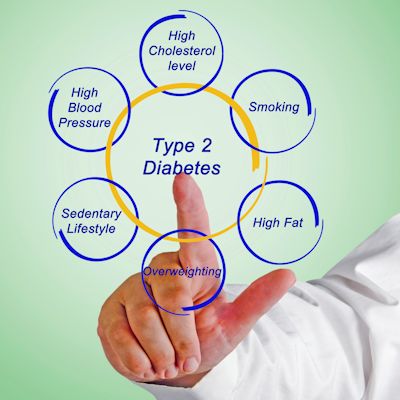Diabetes is the seventh leading cause of death in the United States. Millions of Americans have been diagnosed with the disease, but millions more don’t know they have it, according to the Centers for Disease Control and Prevention (CDC). Take charge of your health by educating yourself with these six facts about diabetes.
1. More than 9 in 10 people with diabetes have type 2.
People with diabetes most often have type 2. You are at higher risk for type 2 if you are older, obese, don’t get much exercise or have a family history of diabetes. You are also at risk if you have prediabetes, had gestational diabetes or are of a certain ethnic background. Type 2 diabetes was once seen just in adults, but more children and teens are being diagnosed with it.
2. If your diabetes isn't under control, it can harm your eyes, heart and kidneys.
Diabetes can affect many parts of your body and lead to serious health problems. These include eye problems, gum disease, heart disease, kidney damage, lower-limb amputations, nerve damage and stroke. You can help prevent these problems by keeping your blood sugar, blood pressure and cholesterol levels under control.
3. Unhealthy weight gain makes it more likely for you to develop type 2 diabetes.
Being overweight and not getting exercise make it more likely that you will develop type 2 diabetes. Losing weight and being more physically active may help you prevent it.
4. Hispanics, American Indians/Alaska Natives and non-Hispanic blacks are more likely to get type 2 diabetes.
According to the American Diabetes Association, diabetes is more likely in people who are 20 or older and are American Indians/Alaska Natives, non-Hispanic blacks, Hispanics or Asian Americans. Non-Hispanic blacks are almost two times more likely to have diabetes than non-Hispanic whites.
5. Skin infections that don't heal easily, irritability, mood changes and dry, itchy skin are possible symptoms of type 2 diabetes.
Other symptoms may include sexual dysfunction, needing to urinate often and tingling or loss of feeling in the hands or feet. But some people who have type 2 diabetes may have no symptoms. Symptoms may be mild and almost unnoticeable, or easily confused with normal signs of aging. Half of all Americans who have diabetes don’t know it.
6. Exercise helps people with diabetes improve oxygen flow, lower insulin resistance and regulate blood pressure.
Exercise makes your cells more sensitive to insulin. Your muscles use more blood sugar during exercise. This lowers your blood sugar levels and cuts your body’s need for insulin.
Need help managing diabetes?
Tanner Health System’s Get Healthy, Live Well launched the Living Well With Diabetes program in late 2015 to help people successfully manage their condition and get support from other people living with diabetes.
Living Well With Diabetes was created at Stanford University as one of their renowned self-management classes to help patients with chronic diseases live healthier and happier lives. The classes teach patients about what diabetes means for their bodies and it explores various treatment options. It also discusses healthy eating and exercise.
A study found that participants reduced their A1C levels and their rates of hyperglycemia and hypoglycemia as a result of participating in the program. Group support and camaraderie are also important parts of the program. To sign up for an upcoming Living Well With Diabetes class, call 770.214.CARE or register online.